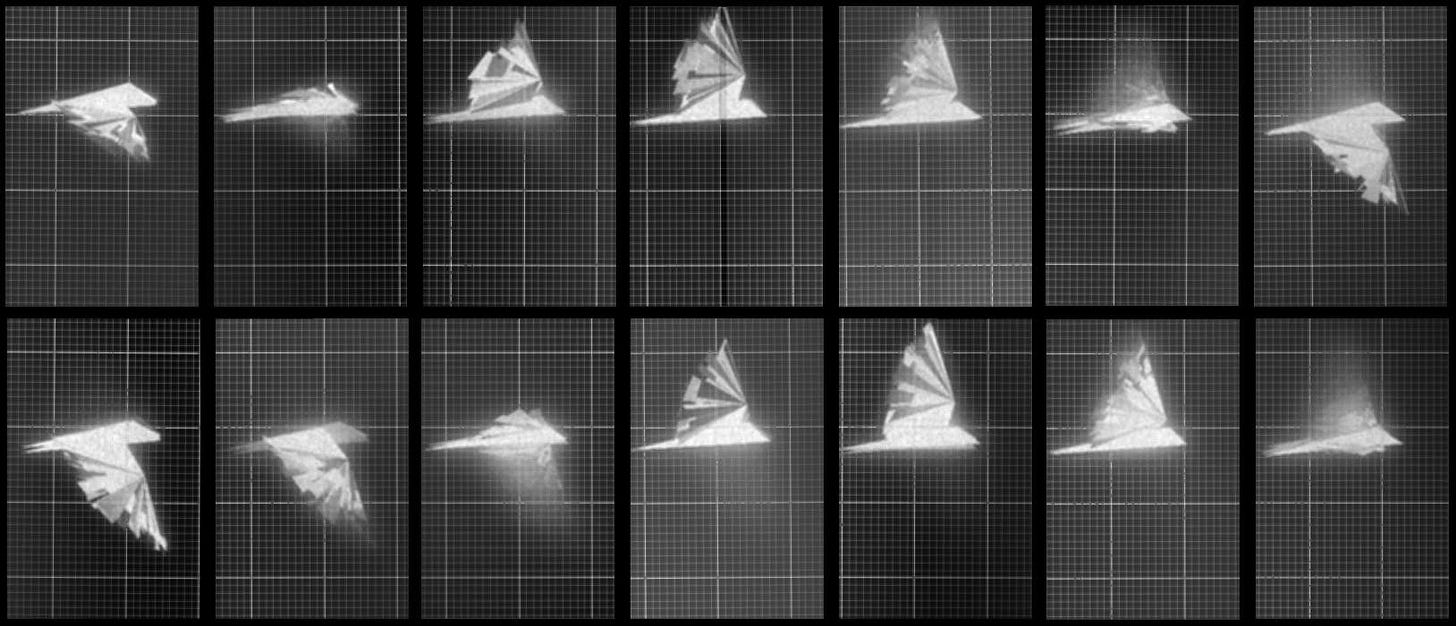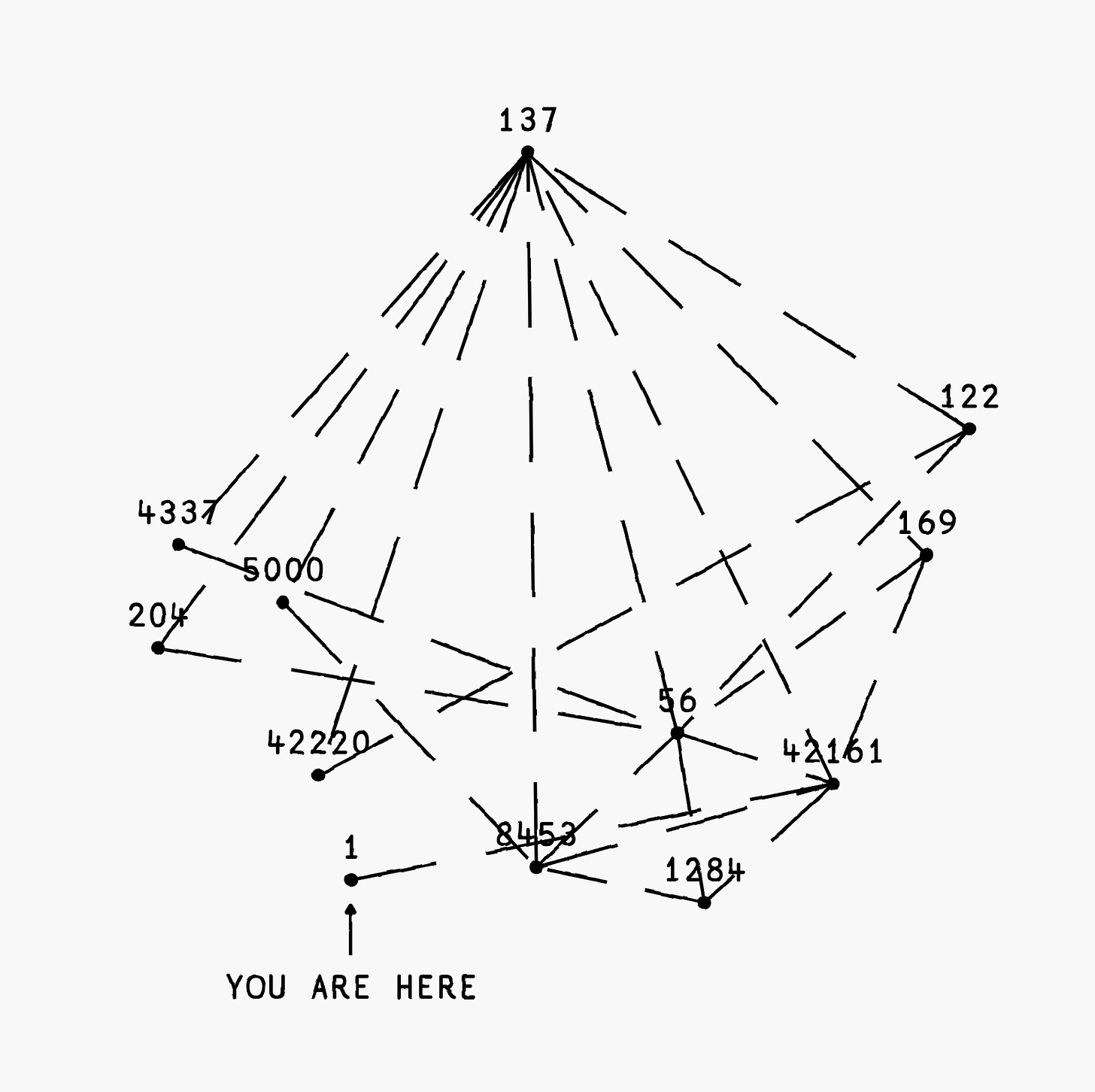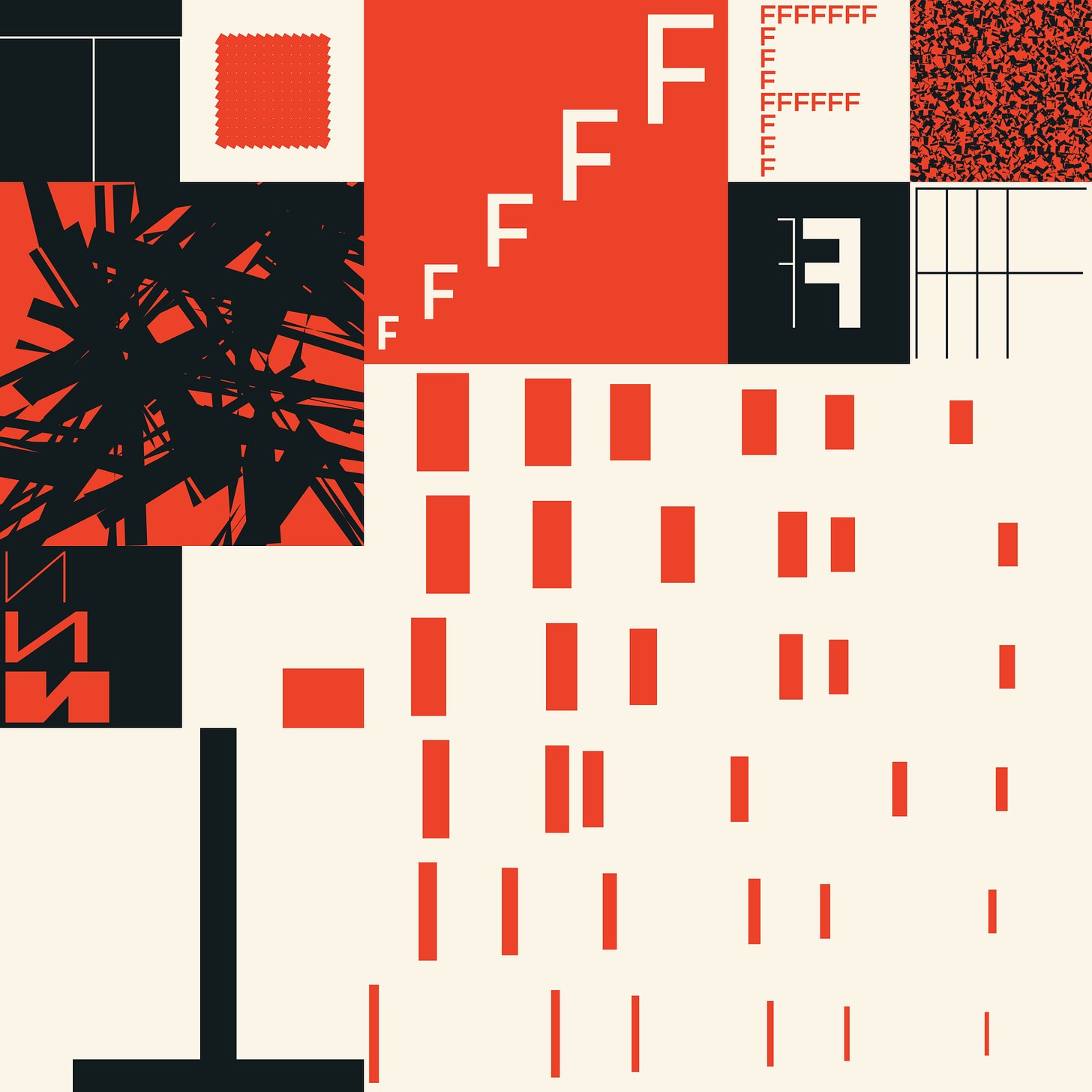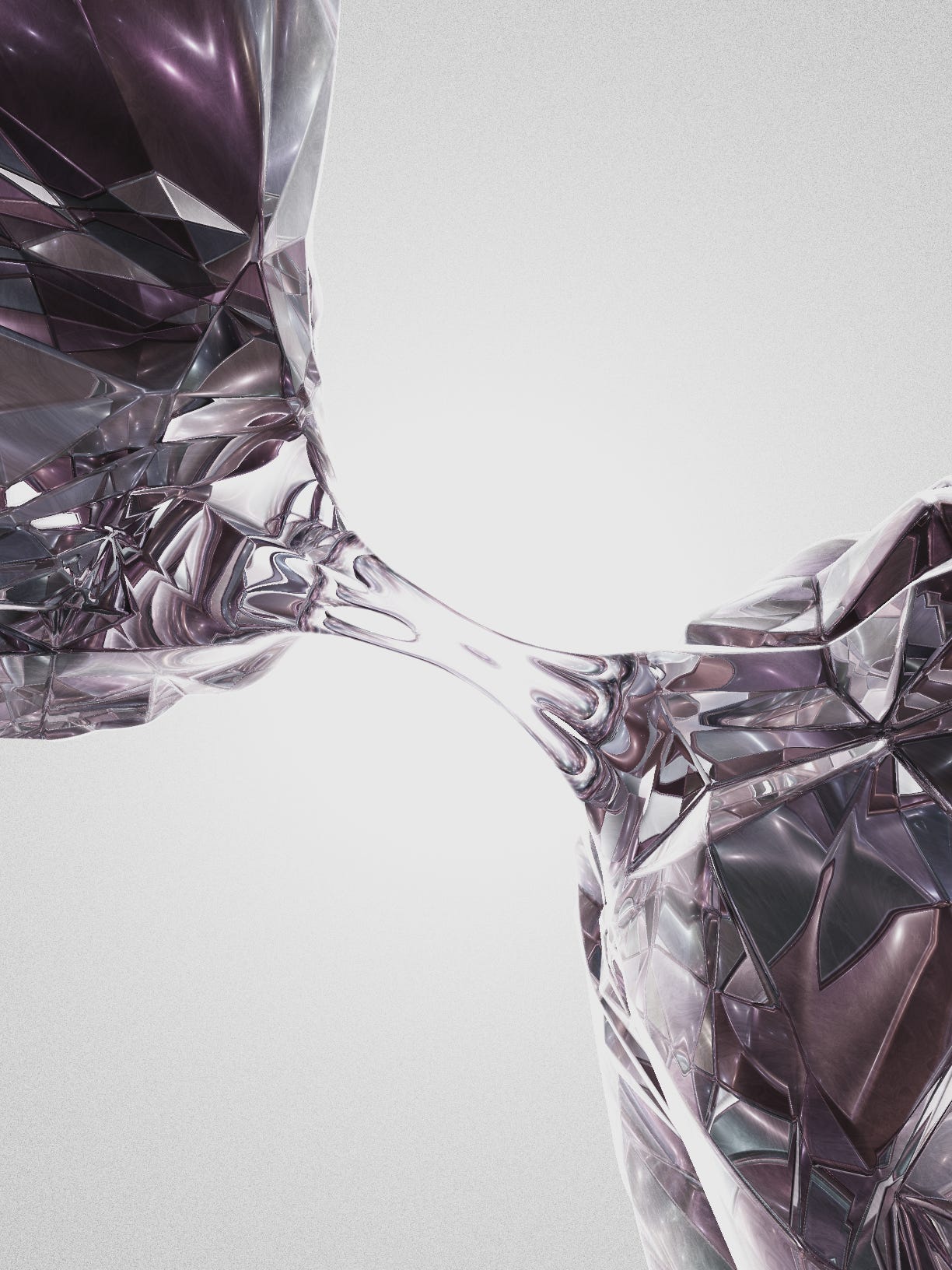20 Digital Art Trends to Watch in 2024

We recently wrote about Highlight, a creator suite platform for artists. It’s one of my favorite projects right now, not only because its tooling is slick but also because its team is outstanding. Heading up that team is Nat Emodi, Highlight’s founder and CEO, and he’s got as good a handle on the art scene around crypto as anyone I’ve ever known.
That’s why today I’m excited to share a guest post by Nat on 20 digital art trends to watch here in 2024. His points are right on the money in my opinion, so let’s dive in and preview where our corner of the digital art market is headed! 👇
1. Expansion of “generative” to encompass much more.
In 2024, “generative” is no longer constrained to “long-form” projects and is rightly being used to define other types of dynamic, digitally native code-based works. This includes any project that involves autonomous systems using code, data, network activity, onchain actions, or decentralized coordination. Where previously generative art was purely about exploring a visual design space, these projects use systems to ask more profound conceptual questions and allow viewers/holders themselves to participate in the work.
For example, Kevin Esherick’s Catalog was 12 lines of code that randomly called pictures of consumer goods from Costco’s image servers in a way that was fully autonomous, entirely code-based, and more of a communal experience than most standard mints. Stevie P’s Money Making Opportunity or SHL0MS’ recent 404 explored similar terrain. Beyond these internet gatherings are IRL experiences such as Human Unreadable by Operator, which fused choreography, blockchain, and generative art in an ongoing live performance across both the blockchain and exhibition spaces. And while Terraforms by Mathcastles is now more than two years old, the community around it (led by artist 113, among others) continues to guide a generation of digital artists.

2. More projects will be onchain or inchain.
This year, we’ll continue to see artists and collectors pushing for work with novel on-chain dynamics and fewer off-chain dependencies. This trend will be helped by lower gas costs on L2s (see #6 below), innovation happening at the technical level, and the mindset artists are bringing. Many artists view the blockchain as an exciting new medium that brings permanence, independence, dynamism, social coordination, and transparency to their work.
Projects such as GOLD by James Bloom, Alternate by Kim Asendorf, Chronophotograph by DeafBeef, Bit Rot by Nahiko, and You Are Here by 0xfff are excellent recent examples of artists prioritizing onchain or inchain aspects of their work purely for creative exploration. And AI artists continue to explore how their models or training data can exist onchain.

3. Games, interactivity, and decentralized coordination will continue to redefine digital art.
Pushing ideas around interactivity, communal experience, and group coordination brings us to gaming. Some of the most exhilarating projects of 2023 were implicitly or explicitly games. Boys of Summer by Mitchell F. Chan, Suika Stay Home by Billy Rennekamp and Joon Yeon Park, Bullet Heaven [YOKO] by Sam Hains, and, of course, Quasi Dragon Studies by Harvey Rayner all were game experiences and artworks simultaneously. As digital culture rapidly shapes mainstream culture, 2024 could be when gaming decisively infiltrates art.
![Bullet Heaven [YOKO] #101 by Sam Hains Bullet Heaven [YOKO] #101 by Sam Hains](https://bankless.ghost.io/content/images/2024/02/https-3a-2f-2fsubstack-post-media-s3-amazonaws-com-2fpublic-2fimages-2fe3bc0cf6-a8d1-4c3f-8fa9-21de69e90be3_1726x1666-png.jpg)
4. New collectors will be onboarded via increasingly smoother UXs.
For 2022 and 2023, the ecosystem’s growth was almost at a standstill as mainstream consumers remained cool on anything NFT-related, and crypto-native experiences remained a barrier.
As 2024 kicks off, developer and user adoption is accelerating rapidly via embedded wallets, “gasless” minting, and other abstraction layers that translate into mainstream readiness. Within the Ethereum ecosystem, this is supported by the recent development of Layer 2 networks, including Base, Optimism, and Zora, that bring massive cost reductions and speed upgrades. With these improvements, it’s quickly becoming possible to collect and trade the highest-value digital artwork without spending days or weeks ramping up on the blockchain intricacies under the hood.
5. Gallerization, curation, and signal-to-noise ratio.
This year, we’ll continue to see a move towards more gallerization, curation, and other signals that help collectors navigate the rapidly growing ecosystem. At the higher end of the market, artists will continue trending towards gallery representation. While curation has been pioneered by stalwarts such as Feral File and Art Blocks for years, its importance is becoming more visible and vital as interest in digital art grows. Crucially, curators help determine how different works are received, shape the cultural significance of the artist, and ensure that suitable collectors are ready to mint come release day. Beyond that, curators can offer an honest, informed critique that can significantly help artists when they’re developing new work.
In 2024, DAOs such as Grailers and Fingerprints; tools such as Foundation Worlds and Verse’s Galleries; organizations such as Tender and Le Random; and gallerists such as Kate Vass Galerie, Gazelli Art House, and EXPANDED continue to bring good curation to the forefront.
6. The trend towards new (for art) chains.
We’re seeing massive interest in Solana and Bitcoin Ordinals for new artwork. Many of the works being released here are exceptional, and both artists and collectors are noticing. Meanwhile, L2s such as Base, Optimism, and Zora are attracting a rapidly growing number of artists seeking a low-cost alternative to other L1s. As artists migrate, many collectors — those who have made Ethereum digital art’s main stage until now — follow.
7. Explorations beyond “long-form.”
It’s surreal to consider that long-form generative art was standardized by Art Blocks only in 2021 when Tyler Hobbs wrote his famous essay cementing it. “Long-form” refers to any release of 500-1,000 pieces, all minted randomly with seeds generated from the transaction hash, often using javascript libraries such as p5.js. This format was a milestone in the growth of the digital art sphere. It helped create a Schelling point for thousands of artists and hundreds of thousands of collectors that was fun, exciting, uniquely enabled by the blockchain, and quickly decipherable.
However, entering 2024, we’re seeing enthusiasm for this format — from collectors and artists with established long-form collections — shifting to explore other release formats. For example, Sketchbook A by William Mapan, while generating 1M+ preview outputs, was distilled down into a masterful set of 64 curated works. While Vera Molnár’s Themes and Variations was a 500-piece collection, each work was hand-picked in advance. As the ecosystem matures, some collectors are less interested in the inevitable long tail of long-form outputs and prefer consistent quality across a collection.

8. Long-form will continue to shine.
Despite the evolution, stellar long-form generative work continues to captivate now more than ever.
Recent standouts include the stunning Blokkendoos by Piter Pasma which bathed minimalist shapes in mesmerizing light “with 5954 characters of code, math, no libraries, just a browser.” Memories of Digital Data by Kazuhiro Tanimoto evoked future nostalgia for the inevitable loss of digital artifacts, every serious artist and collector’s existential fear. And Text Me When You Get Home by Nicole Vella vividly used GLSL code and a single shader to impart a complex emotional exchange. Visually arresting, unique, and profound long-form works like these will continue to emerge this year.
9. Experiments with size and price dynamics will continue.
From open editions at low price points to mint pass experiments and seed marketplaces, we’ll continue to see fantastic art offered at various prices and through an evolving set of sales mechanisms. While this tendency towards experimentation isn’t new — some of the most iconic work on blockchains was given away or released in large quantities (looking at you, Punks) — the potential of L2s, the exploration of the internet medium, and increasing mainstream interest all point to exciting possibilities with digital art.
Will 2024 be the year that more than a million people collect the first breakthrough art collection?

10. Business models will continue to evolve.
This year promises to be another interesting one for galleries, platforms, marketplaces, and artists seeking a steady, sustainable existence in digital art. Last year saw price increases for many platforms, marketplace fee wars between OpenSea and Blur, the continued collapse of royalties, and dozens of other business model experiments to find more solid footing in light of slower market activity. While 2024 looks brighter, we’ll see more of this evolution.
11. Many more people will stop using the word “NFT.”
In 2023, the term NFT gradually became avoided in discussions and releases of digital artwork. This year, people will continue to talk about “onchain digital art” or simply “digital art.” Words like “tokens” or simply “artworks” will dominate.
This will be a subtle but essential shift, as most participants in the ecosystem want to avoid the connotations of valueless scams and hype, and a tainted technical term doesn’t come close to honoring the medium. Instead, the onchain frontier transcends anything technical and relates to the new artistic movement being built with blockchains under the hood. The shift away from the term also reflects a willingness to engage with and participate in digital art’s larger history and not pretend that it appeared out of nowhere with the NFT boom in 2021.
12. Strong communities will continue to flourish.
This trend might seem obvious, but surveying the turbulence of the last few years shows that communities based on speculation have evaporated. At the same time, those built on more intrinsic motivation are getting stronger. Communities such as Grailers, Tender, fxHash, FWB, and CryptoPunks continue to be among the most thoughtful and exciting corners of the internet.
The crypto bear market left many communities deserted, but in digital art, there has never been a more active or vibrant time to be part of the scene. As the market recovers, these communities will be rewarded for their perseverance over the last few years.
13. AI artists continue to astound while proving human creativity is the focal point.
While some of the most sought-after digital art dates back to early GANs exploration, 2023 was a break-out year for AI art. Bright Moments added AI exhibitions to their tour program starting in Tokyo, with stand-out works from Claire Silver, Ganbrood, Pindar Van Arman, Sofia Crespo, and many others. Brain Drops released breathtaking work from Roope Rainisto, ClownVamp, DeltaSauce, and more. Artists such as Ira Greenberg, Entangled Others, Huemin, and Richard Nadler pushed boundaries while reminding us that human creativity remains the vital spark.
While our screens were awash with imagery from neural networks, these artists astounded as only great artists can. The coming year will bring us even more AI art that catches our attention because artists like these pair inimitable creativity with rapidly improving tools.

14. We continue to honor pioneers of the medium.
2023 saw increased appreciation for digital art pioneers with new releases from Vera Molnar, Herbert Franke, and others who leveraged early computing technologies to create groundbreaking works decades ago.
As the digital art world continues its momentum, we’ll see even more effort in 2024 to honor, spotlight, and support releases from many first-wave computer artists. Look for new retrospective projects and newly discovered or preserved vintage works to come to market from influential early practitioners. There is ample interest in learning and acquiring work from the pre-blockchain innovators who were among the first to examine art’s relationship with computers.
15. IRL exhibitions will continue to get better.
Over the last few years, IRL exhibitions for digital art have left many artists and collectors feeling cold. Obvious exceptions here include Bright Moments, perhaps the premiere IRL exhibitor of digital work, gallerists such as Kate Vass, the Art Blocks Marfa gallery, institutions such as LACMA, organizations such as Verse and Tender, and artists themselves, as the recent, groundbreaking AGH 1 exhibition in Berlin helped prove. But many others led to frustration around venue choice, exhibition standards, lack of context, and group shows that were thrown together without much thought.
In 2024, both curators and artists will approach exhibitions with an increased focus on elevating the quality of the in-person experience.

16. Decentralized social networks like Farcaster and Zora change how work is released and collected.
The past couple of weeks have sparked strong interest in Farcaster, Lens, Zora, and other decentralized social protocols. With Farcaster, the potential for artists to build a social graph of their collectors and engage them with interactive, mintable social posts points to a much more intriguing alternative over crypto Twitter or Discord, where much of the energy of the past few years has been based.
Many collectors are following closely to see if security can be improved and the quality of their engagement can be rewarded relative to web2 social networks.
17. Major countries and institutions continue to lean in.
Major countries and cultural institutions will continue acquiring digital art for their collections in 2024. The momentum we saw build in 2022-2023 with purchases from renowned museums such as MoMA, Le Centre Pompidou, LACMA, and others will carry through as these institutions seek to represent new technological mediums.
This year, major signs of support have emerged, such as Combine24 by the Finnish National Gallery and a blockchain art symposium in the Palace of Westminster. More acquisitions are predicted as institutions aim to showcase relevant works and artists continue leveraging the blockchain to create provocative digital art.
18. Market prices continue to be buoyed by the underlying crypto markets.
We’ve seen a significant correlation between trends in the cryptocurrency markets and the valuations of digital art pieces and collections. If broader speculation in cryptocurrencies like Bitcoin and Ethereum remains strong in 2024, there will likely be a lift in overall activity and prices in the digital art world. However, any significant corrections or crypto bear markets next year could depress prices for highly sought-after digital artworks.
Ultimately, the emergent digital art market remains tied to the volatility and overarching trajectory of cryptocurrencies, which are still used in most marketplace transactions. Unless this changes, digital art buyer and investor sentiment will be buoyed or dampened alongside crypto market developments through next year.
19. Cross-over between the traditional and digital art worlds will continue.
As successful traditional artists continue to awaken to the potential of digital art and successful digitally native artists become welcomed into traditional spheres, 2024 will continue to see pollination in both directions.
The past two years saw high-profile traditional painters, sculptors, photographers, and digital artists such as Damien Hirst, Tom Sachs, Kevin Abosch, Philip Colbert, LoVid, and Simon Denny start tokenizing their works. As they and others explore the use of blockchain technology to push boundaries that are not possible with any traditional medium, more artists from traditional backgrounds will release work here over the next year.
20. Apple’s Vision Pro release sets the stage for entirely new viewing experiences.
The device’s advanced resolution and immersive capabilities could enable entirely new viewing and collecting experiences for digital art collectors and unlock additional value in owning it.
Instead of viewing artwork on standard screens, collectors in 2024 can visit virtual galleries and interact with one-of-a-kind motion pieces, 3D sculptures, AI-generated landscapes, and other digitally native artwork. Better user experiences via embedded wallets and other infrastructure could accelerate this development.